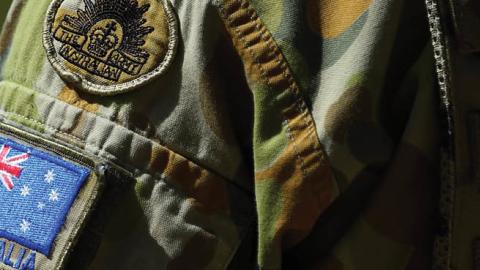__The Look Ahead Series is a collection of policy memos examining the challenges that political, military, and business leaders must contend with today to ensure a secure, free, and prosperous world tomorrow.__
Introduction
Since around 2016, Australia has been transitioning away from a “small target” hedging mindset toward a more proactive countering and balancing approach vis-à-vis the People’s Republic of China. This is largely a response to the increasingly assertive and coercive activities of the Chinese Communist Party (CCP), which is the predominant cause of instability, uncertainty, and anxiety in Canberra and throughout the Indo-Pacific region. The CCP has implemented a sustained and cascading array of economic and diplomatic punishments against Australia in an attempt to intimidate Australia and force changes in Australian policy.
Beijing is explicit that this is the purpose of the ongoing series of punishments against Canberra. In November 2020, its embassy in Canberra went to the extraordinary lengths of releasing the infamous “14 grievances” against the Australian government[i] to justify the ongoing punitive measures. These included mainly domestic Australian policies such as restrictions on Chinese investment, the funding of Australian think tanks critical of the PRC, the passing of foreign interference legislation to root out Chinese interference in Australian institutions, and the banning of Chinese firms from the Australian 5G telecommunications roll-out.
Australia is widely seen as the proverbial canary in the mine and needs American support. If Australia can hold its ground and continue to find the courage and creativity to pursue its national interest, then the PRC will suffer an enormous blow. On the other hand, if Australia is eventually cowed by the PRC and relents on key policy settings, then other sovereign nations might well lose the courage to stand firmer against the PRC’s coercion and intimidation.
Strengthening the fortitude of Australian leaders is the assurance that the United States is behind its ally. That assurance was previously given to Canberra by the Donald Trump administration and has been continued by the Joe Biden administration. Indeed, the Biden administration has declared it will go further and do better than the previous administration in reinvigorating and deepening its alliances and friendships with Indo-Pacific nations to better manage the PRC challenge and threat.
This brief has been prepared to assist the Biden team in doing just that. It gives some context to Australia’s evolving Indo-Pacific strategy:
* how a nation that is not a superpower is thinking about the PRC’s policies and activities in the region,
* why Canberra is taking proactive and forward leaning actions to counter and balance the PRC, and
* what Canberra is hoping will be some priority areas for the Biden administration with respect to the Indo-Pacific approach and strategy by the US.



















